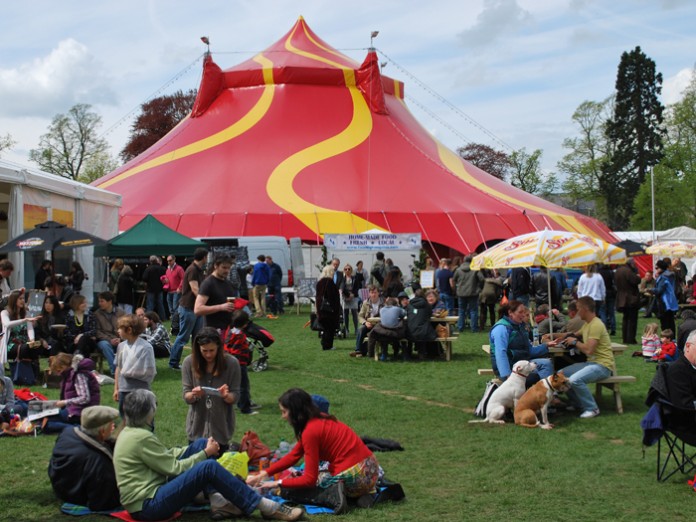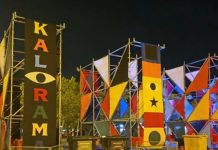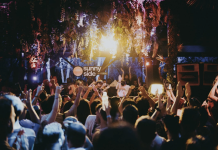Cheltenham Jazz Festival was founded in 1996, and is one of several events under the Cheltenham Festivals umbrella that also encompasses Science, Literature, and Music editions. Celebrating its 20th anniversary this year, Cheltenham Jazz took place from April 27 – May 2 and featured Guy Garvey, Lianne La Havas, and Beverley Knight, to name a few.
Insights spoke with Ian George, Director of Cheltenham Jazz, about the Festival’s commitment to both education and the representation of emerging talent, its close working relationship with Jamie Cullum, and more.
George initially joined Cheltenham Festivals as the parent group’s head of marketing, in the process meeting Cheltenham Jazz’s future Artistic Curator Jamie Cullum. It was in 2010 – George’s first year as Director of the Jazz Festival – that he asked Cullum to join as its guest director. “He’s been a key player in the Festival’s growth,” said George. Cullum’s Radio 2 show has proven a crucial promotional tool for the event, and in tandem with the Festival has facilitated the ascent of artists such as Gregory Porter. His mainstream success and crossover appeal between the pop and jazz realms continues to introduce new audiences to the Festival, something that George is ever thankful for. Since George and Cullum joined forces on the Festival six years ago, it has gone from selling 9,000 tickets a year to 25,000.
Aside from Cullum, George identifies a suitable act on the line-up to be its respective year’s Artist in Residence. Musicians such as Gregory Porter, Laura Mvula and Paloma Faith have taken the reins in recent years, with the latter’s contribution taking the form of a film noir cinematic programme. Giving its headliners a more involved role in the Festival is something George attributes great value to. “It introduces a different flavour to the event each year. By nature the fans love to gain an insight into the artists’ personal taste and much like Meltdown Festival, we think using external curators adds a lot of value.”
In addition to its unique approach to musical programming, Cheltenham Jazz also focuses heavily on art & design, food & drink and a formidable educational component that comprises workshops and year-round community outreach. Its family-orientated and educational elements were developed further for 2016. “That’s a key area for us,” said George. “Our workshops at the festival involve family singalong sessions, swing dance classes, and even allow kids to build their own instruments.”
North Sea Jazz – Cheltenham’s overseas contemporary – also endeavours to inspire a new generation of potential jazz musicians, not only with its similar children’s workshops but by collaborating with The Netherlands’ most prestigious Conservatoire. Much in the same vein, Cheltenham works with both Birmingham Conservatoire and the University of Gloucestershire. Students from the former form the house band at one of the Festival’s free venues, and they occasionally enjoy the privilege of jamming with one or more of the event’s headliners. Cheltenham’s partnership with the University of Gloucestershire manifests itself differently, providing its Event Management and Fashion students with experience working on the logistical and design elements of the Festival, respectively.
Cheltenham Jazz is a hybrid between both a metropolitan and greenfield site, and a free and paid event. Although the core concerts are ticketed, punters can stroll into Montpellier Gardens to experience food & drink, family activities, and a multitude of free events. “When I took over the festival was highly regarded in jazz circles but not so much outside of that,” said George. “Adding the greenfield element and expanding the free concert programme has added a visual presence to the Festival and has allowed more people to experience jazz music.”
Introducing new audiences to its eponymous genre is part of Cheltenham Jazz’s mission statement. Beyond the event itself, it maintains a strong year-round presence in its local community by visiting schools and aiming to “demystify jazz music” with occasional help from its headliners. The BBC Concert Orchestra works with the Festival to grant 120 schoolchildren behind-the-scenes access to its show, where they can participate in a Q&A with the producers and musicians and sit in on rehearsals. “It’s about opening up the Festival brand, inspiring a new generation of musicians and giving back to the community,” said George.
Similarly, George and the Cheltenham Jazz team have internalised a responsibility towards representing emerging talent. Cheltenham’s free concerts programme has expanded this year to 90 events, in which local and national acts are given a platform. Two selected bands from the previous year’s Festival are granted a slot in the main programme too, and BBC Introducing puts on a showcase concert at the festival that features three of the best upcoming jazz bands in the country. Furthermore, a brand activation called the Henry Westons Sessions – in association with the Festival’s official cider of the same name – sees backstage interviews with Cheltenham artists conducted and posted to YouTube to increase exposure for both parties.
“I feel as a promoter you’ve got to represent emerging talent,” said George. “You’re always trying to develop artists because it’s in your best interests. Plus, you want to take the audience on a journey of discovery. We’re proud of being the first jazz festival to give Gregory Porter his own show in the UK. We played a major part in his rise to stardom because one of the first things we got him on was Radio 2, doing a Ray Charles night with the Concert Orchestra. Jamie was right at the heart of that, performing with Gregory. We put him on as a relative unknown but with Jamie’s involvement we sold out our biggest venue.”





